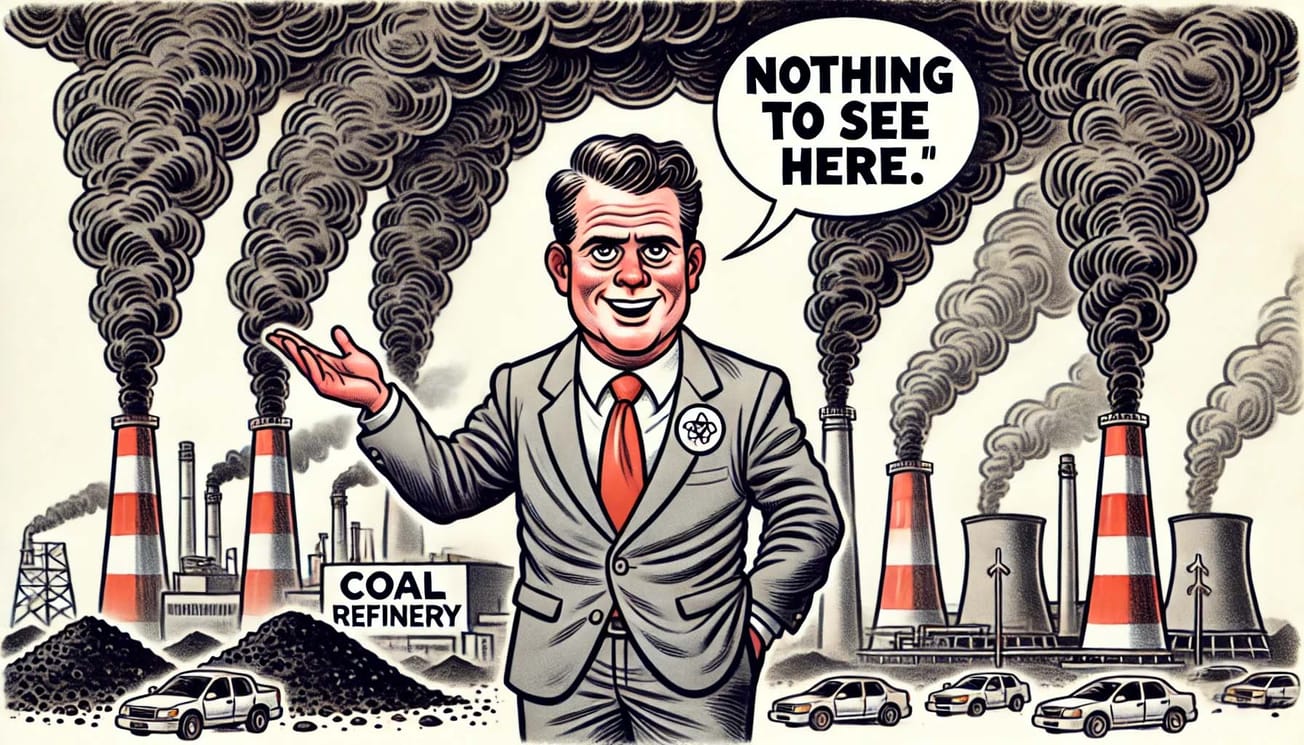Although the International Energy Agency highlighted an impressive $2 trillion invested in renewable energy sources in 2024—double the amount allocated to oil, gas, and coal—this progress merely satisfies rising global energy demand rather than displacing existing fossil fuel consumption. Fatih Birol, the head of the IEA, confidently noted, “Clean energy investment is setting new records… For every dollar invested in fossil fuels today, almost two dollars flow into clean energy,” celebrating a crucial milestone in the global energy transition. Yet, in a revealing acknowledgment of persistent market realities, Birol simultaneously advocated for increased investment in oil and gas, signaling that the energy transition, though promising, remains deeply entwined with traditional energy sources.
Sadly, enthusiasm for the energy transition is collapsing as hard economic truths resurface, drawing investors back toward conventional energy sources: oil, gas, and coal. Even committed transition champions like the IEA's Fatih Birol now openly call for expanded fossil fuel investments, acknowledging a stark reality—maintaining our lifestyles continue to outweigh climate science's dire warnings. While environmental activists must remain unwavering in their efforts to phase out fossil fuels, a harsh truth demands urgent action: we must immediately prioritize adaptation strategies or face an uncertain future in what will be a hotter, harsher world.
Even as massive amounts of money have poured into renewables—wind turbines, solar panels, and battery storage—an unforgiving reality remains: this surge barely keeps pace with soaring global energy demand, totally failing to dethrone oil, gas, and especially coal. Coal stubbornly retains its dominance, particularly in China, ironically the world's renewable-energy leader.
China’s energy strategy reflects a calculated realism. While aggressively investing in renewable technologies and transportation electrification, it remains unwilling to relinquish its reliance on fossil fuels, steadily expanding domestic oil, gas, and coal production to meet surging lifestyle demands and subsequent escalating energy needs. Europe’s contrasting path—a more idealistic and uncompromising pursuit of fossil fuel elimination—reveals stark vulnerabilities. The consequences are increasingly clear: spiraling electricity costs, compromised energy reliability, and looming financial burdens as European nations steadfastly persist with an approach that raises serious concern as to whether they can sustain public support.
Energy markets are profoundly shaped by technological breakthroughs and the fundamental economic forces of supply and demand—the latter asserting decisive influence. Regrettably, these market dynamics have not favored the renewable energy transition. Instead, they have starkly revealed that the current shift toward renewables remains economically precarious, reliant upon sustained and significant government support to remain viable. This dependency becomes increasingly evident as renewable industries, particularly wind and solar, repeatedly call for expanded subsidies amidst the end of historically low interest rates. While China has indeed achieved impressive technological advancements through patient investment, prolonged research, and extensive subsidies, Europe's ambition to rapidly replicate such success faces daunting economic realities and substantial hurdles.
For instance, Germany’s rapid phase-out of nuclear energy and significant investment in wind and solar has led to skyrocketing electricity costs and energy supply instability, forcing renewed reliance on coal. The growing disparity between renewable energy aspirations and market realities has led to a notable retreat by investors from the sector. Germany's largest utility, RWE, announced a reduction of over 20% in its investment plans up to 2030, citing uncertainties in renewable energy returns due to geopolitical risks and supply chain issues. Similarly, the UK’s heavy subsidization of offshore wind projects has not prevented rising consumer energy prices, prompting industry stakeholders to request additional government support to maintain growth. Norway's Equinor scaled back its climate ambitions, reducing its renewable energy capacity targets amid increased costs and regulatory delays. These examples underscore the complexity and economic hurdles of accelerating technological deployment without sufficient lead time and sustained governmental backing.
Despite substantial investments in renewable energy, current global efforts are insufficient to prevent a significant rise in global temperatures. The Intergovernmental Panel on Climate Change (IPCC) projects that, under existing policies, the world is on track for approximately 2.5° - 3.0° C of warming above pre-industrial levels by the end of the century. This trajectory underscores the urgent need to develop and implement adaptive strategies to mitigate the impacts of a warmer world.
A 3°C increase in global temperatures would set in motion devastating consequences, profoundly reshaping life on Earth. Many ecosystems would teeter dangerously close to collapse, with extinction rates accelerating to unprecedented levels. Extreme weather events—searing heatwaves, powerful hurricanes, and catastrophic floods—would grow increasingly frequent and severe, displacing millions and lowering agricultural production worldwide. Coastal cities would face relentless erosion from rising seas, while melting glaciers would erase critical freshwater resources. Even wealthier nations, capable of substantial adaptation efforts, would endure a diminished existence amidst a rapidly deteriorating natural world. Humanity stands at a crucial crossroads: we must urgently invest in adaptive strategies, fortify our infrastructure, innovate drought-resistant agriculture, and enhance disaster preparedness— or brace for a future defined by irreversible loss.












